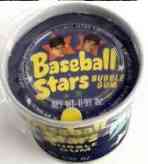1959 Topps #490 Frank Thomas (Reds)


Please wander around the website for more info, prices, values & images
on vintage baseball, football, basketball, hockey, sport and non-sports cards.
Team Autographed / Signed Baseballs
Team signed baseballs were the thing well before single-signed
balls exploded on the market.
Click for our current
Autographed/Signed Team Baseball inventory
What is a "Team Signed Baseball" ??? Simple answer: A ball with XXX signatures of a certain team for a certain year. What is difficult is the XXX. Baseball tons of roster moves make it nearly impossible to "Get Them All". Generally, team signed baseballs from early 1900's had 10 to 15 signatures, the 1940's that jumped to 18 to 25. Joyce Sports Research Collection (Notre Dame) says "signatures must include only members of a specific team from a specific year, and there must be some approximation of completeness." Not concrete but to me a "team ball" MUST have ALL the team's STARS (unless a rookie or in season trade) and in today's market at least 20, preferably more, and the manager.
Determining Age of Team Signed Balls
Note: You may be on that page now. |

1954 Quaker Oats Sports Oddities |

1970/1972/1973 Topps Candy Lids |

The first baseball trading cards date back to 1869. For many years, baseball cards were packaged in packs of tobacco as a way to increase sales the same way that today prizes are packaged in boxes of cereal. In the 1920's and 1930's, candy and gum companies started packaging baseball cards in their products as well.
Baseball card production was virtually halted in the early 1940's due to paper shortages created by World War II. The "Modern Era" of baseball cards began in 1948 when Bowman Gum Inc. offered one card and one piece of gum in a pack for a penny.
The first important football set was the Mayo set featuring college players in 1984. Other than the 1935 National Chicle set no other key football set was issued until 1948 when noth Bowman and Leaf produced sets.

 Topps has tried many crazy products, called "test issues".
Mostly distributed in limited areas, test issues were scarce.
"Candy Lids" were little tubs of candy with player's photos on
bottom of a 1-7/8" lid. 10 cents/tub, 24 tubs/box.
Topps has tried many crazy products, called "test issues".
Mostly distributed in limited areas, test issues were scarce.
"Candy Lids" were little tubs of candy with player's photos on
bottom of a 1-7/8" lid. 10 cents/tub, 24 tubs/box. 

 1970 Topps Candy Lids were called "Baseball Stars Bubble Gum",
had 24 players, the 1973 Topps Candy Lids had 55.
1970 Topps Candy Lids were called "Baseball Stars Bubble Gum",
had 24 players, the 1973 Topps Candy Lids had 55.  Topps 1973 Pinups & Comics share many of the same photos.
Topps 1973 Pinups & Comics share many of the same photos. 